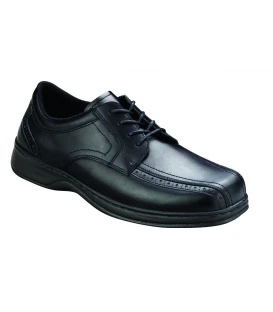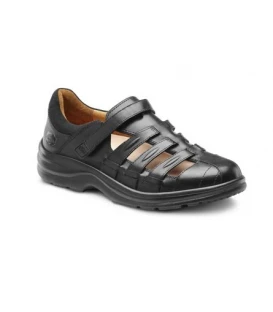Diabetic Shoes: Protecting Foot Health and Enhancing Quality of Life for Individuals with Diabetes

Diabetic shoes play a vital role in the management and prevention of foot complications in individuals living with diabetes. Diabetes can cause various issues, including peripheral neuropathy, poor circulation, and increased susceptibility to infections. These conditions can lead to foot ulcers, calluses, and other injuries that, if left untreated, may result in serious complications, including amputations. Diabetic shoes are specially designed footwear that provide protection, support, and comfort for individuals with diabetes, helping to reduce the risk of foot problems and promote overall foot health. This comprehensive article explores the importance of diabetic shoes, their features, benefits, and the positive impact they have on the lives of those with diabetes.
Understanding Diabetic Foot Conditions
To comprehend the significance of diabetic shoes, it is essential to understand the foot conditions commonly faced by individuals with diabetes. Diabetes affects the body's ability to regulate blood sugar levels, which can lead to nerve damage (neuropathy) and compromised blood flow (peripheral vascular disease). These complications diminish sensation in the feet and impair the body's natural healing processes, making individuals with diabetes more susceptible to foot problems. Common foot conditions associated with diabetes include neuropathic ulcers, calluses, corns, infections, and Charcot foot.
Features of Diabetic Shoes
Diabetic shoes are designed to provide optimal support, protection, and comfort for individuals with diabetes. They incorporate several key features that address the specific needs and challenges faced by individuals with diabetic foot conditions:
1. Extra Depth and Width: Diabetic shoes are typically designed with extra depth and width to accommodate custom orthotics, insoles, or additional padding. This feature helps alleviate pressure points, reduces friction, and provides a comfortable fit for individuals with foot deformities, swelling, or orthopedic devices.
2. Seamless Construction: Diabetic shoes are made with seamless interiors to minimize friction and rubbing, reducing the risk of blisters, ulcers, and skin irritation. The absence of seams eliminates potential sources of pressure points and discomfort.
3. Breathable Materials: Diabetic shoes often incorporate breathable materials that allow air circulation and help keep the feet dry. This feature is crucial in preventing excessive moisture, which can lead to fungal infections. Breathable materials promote ventilation, ensuring the feet remain comfortable and healthy.
4. Protective Toe Box: Diabetic shoes typically have a reinforced and spacious toe box, offering ample room for toe movement and reducing the risk of injuries. This protective feature is particularly important for individuals with reduced sensation in their feet, as they may not feel or notice trauma to the toes.
5. Supportive Arch and Sole: Diabetic shoes provide excellent arch support and shock absorption to distribute pressure evenly across the feet. The supportive arch helps reduce strain on the feet, while the cushioned sole absorbs impact, reducing the risk of foot ulcers and other injuries. Proper support and cushioning promote stability and walking comfort.
Benefits of Diabetic Shoes
The utilization of diabetic shoes offers a wide range of benefits for individuals with diabetes:
1. Foot Protection: Diabetic shoes provide essential protection by minimizing pressure points and reducing the risk of developing foot ulcers, blisters, and calluses. The cushioning and design of diabetic shoes help distribute weight evenly and reduce friction, preventing injuries that can lead to severe complications.
2. Enhanced Circulation: The proper fit and supportive features of diabetic shoes promote healthy blood circulation, which is crucial for individuals with diabetes. Improved circulation helps deliver oxygen and nutrients to the feet, aiding in wound healing and reducing the risk of infections.
3. Reduction in Foot Comp
lications: Diabetic shoes help minimize the occurrence of foot complications associated with diabetes. By protecting the feet from injuries, reducing pressure, and promoting overall foot health, diabetic shoes can help prevent ulcers, infections, and other conditions that may require medical intervention or lead to amputations.
4. Comfort and Mobility: The additional cushioning, support, and proper fit of diabetic shoes enhance comfort and mobility for individuals with diabetes. By reducing pain and discomfort, diabetic shoes facilitate daily activities, encourage physical exercise, and contribute to an active lifestyle.
5. Customization and Personalization: Diabetic shoes can be customized to meet individual needs. Healthcare professionals, such as podiatrists or orthotists, can prescribe custom orthotics or modifications to address specific foot conditions. This customization ensures a tailored fit and maximizes the benefits of the shoes for each individual.
6. Psychological Well-being: Foot problems can significantly impact an individual's psychological well-being. By providing comfort, reducing pain, and promoting foot health, diabetic shoes contribute to improved self-confidence and overall emotional well-being.
7. Cost Savings: While the initial investment in diabetic shoes may be higher compared to regular footwear, the long-term cost savings can be significant. By preventing foot complications and reducing the need for medical interventions, hospitalizations, and amputations, diabetic shoes can result in substantial financial savings for individuals with diabetes and healthcare systems.
The Broader Impact
The impact of diabetic shoes goes beyond individual foot health. By preventing foot complications and associated health issues, diabetic shoes contribute to a broader range of benefits:
1. Improved Quality of Life: Foot problems can significantly impact the quality of life for individuals with diabetes. By alleviating pain, reducing the risk of amputations, and promoting mobility, diabetic shoes enhance overall well-being and enable individuals to engage in daily activities and pursue their interests.
2. Reduced Healthcare Burden: By preventing foot complications, diabetic shoes reduce the burden on healthcare systems. Hospitalizations, emergency visits, and specialized treatments for foot problems can be significantly reduced when individuals with diabetes have access to proper foot care and suitable footwear. This, in turn, reduces healthcare costs and resources required for the management of diabetes-related foot conditions.
3. Empowerment and Self-Care: Providing individuals with diabetes the tools to manage their foot health empowers them to take an active role in their self-care. Diabetic shoes, along with education on foot care and regular monitoring, empower individuals to make informed decisions, reduce the risk of complications, and take control of their health.
Conclusion
Diabetic shoes are an essential component of foot care for individuals with diabetes. Their unique features, including extra depth, seamless construction, breathable materials, protective toe boxes, and supportive soles, provide the necessary protection, support, and comfort for individuals with diabetic foot conditions. The numerous benefits offered by diabetic shoes, such as foot protection, enhanced circulation, reduced foot complications, improved comfort and mobility, customization options, and cost savings, make them an invaluable tool in managing and preventing foot problems in individuals with diabetes. By prioritizing foot health and utilizing diabetic shoes, individuals with diabetes can significantly reduce the risk of complications, improve their overall quality of life, and maintain an active and fulfilling lifestyle.













